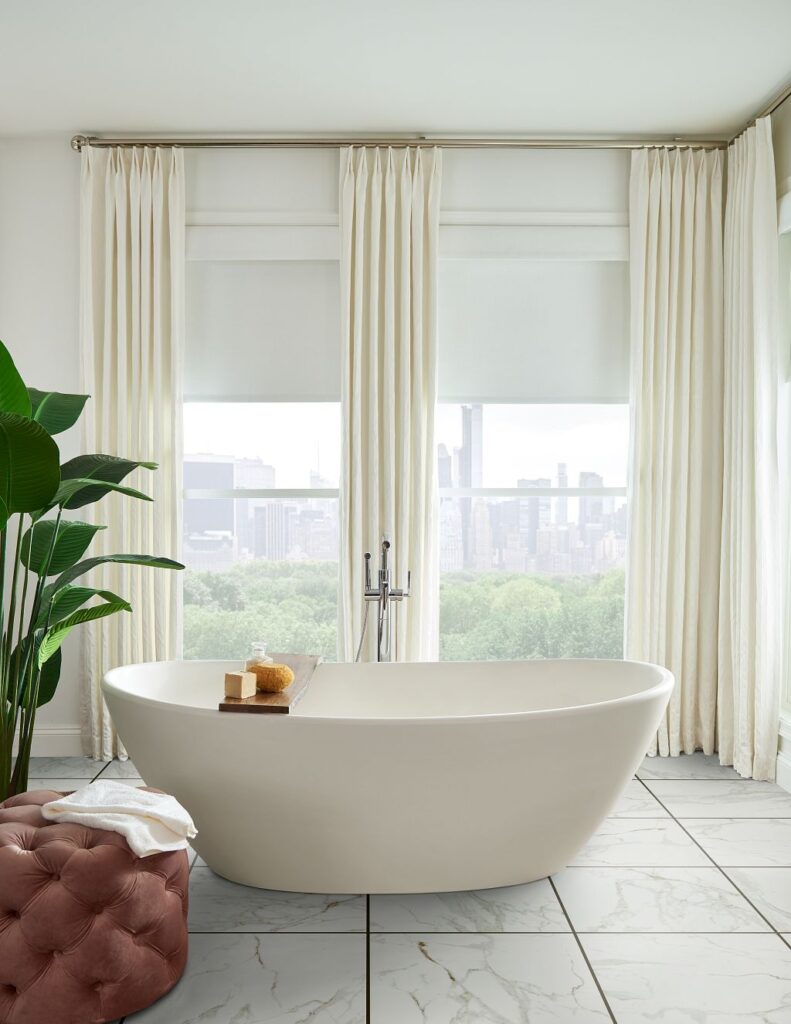When it comes to window treatments, drapery stands out as a classic, versatile choice that combines elegance, functionality, and the ability to enhance any room’s design. Draperies are often made from fabric, providing a softer look compared to materials like wood or metal that are commonly found in hard window treatments. In addition to adding a touch of style and sophistication to a room, drapery can also serve practical functions, offering privacy, insulation, and light control.

Soft Treatments: The Unique Appeal of Drapery
Window treatments are generally divided into two types: soft treatments and hard treatments. Soft treatments are typically made from fabric, giving them a flexibility in design and color that hard treatments can’t match. Draperies are an iconic example of soft treatments and have been used for centuries to bring warmth, depth, and a sense of completion to interiors. They can be custom-tailored to fit various window shapes and sizes, making them suitable for standard windows, large picture windows, and even uniquely shaped or oversized windows.
Soft treatments like drapery provide several distinct advantages. The softness of the fabric helps absorb sound, which can reduce noise levels and make rooms feel quieter and more intimate. Draperies can also be layered with other treatments, such as blinds or shades, to achieve both functional and aesthetic goals. By choosing drapery, you have endless options for customizing the look, from the fabric type and color to pleat style and length.
Material Choices in Drapery: Fabric Types and Functions
Drapery can be made from a variety of fabrics, each offering its own benefits in terms of style, light control, and insulation. Popular fabrics include:
Cotton: Cotton is a lightweight, breathable fabric that provides a casual and clean look, perfect for homes with a relaxed or traditional decor. Cotton drapes offer moderate light control and are often easy to maintain.
Silk: Silk drapes add a luxurious, refined touch and work well in formal settings. While they look beautiful, silk drapes may need lining to protect against fading from sunlight exposure. They’re also best suited for spaces that don’t require heavy-duty functionality, as silk can be delicate.
Linen: Linen is another popular choice that provides a textured, airy look, ideal for adding a natural, organic feel to a space. Linen drapes allow filtered light in while providing a good degree of privacy.
Velvet: Velvet is a heavier fabric, known for its opulent appearance and excellent light-blocking and insulating qualities. Velvet drapery can make a bold design statement and works well in colder climates, as it helps retain warmth indoors.
Polyester Blends: Polyester blends are popular for their durability and affordability. These fabrics can be designed to mimic the look of more luxurious materials like silk or linen, offering a budget-friendly way to achieve high style.
The Functional Benefits of Drapery: Privacy, Insulation, and Light Control
Draperies do more than just look beautiful—they also serve essential functional purposes. Here are some key benefits:
Privacy: One of the primary functions of drapery is to provide privacy. By choosing the right fabric thickness, drapery can block the view from outside while still allowing natural light to filter in, if desired. Heavier drapes, such as velvet or lined fabrics, provide excellent privacy, ideal for bedrooms or spaces facing busy streets.
Insulation: Draperies are also effective for temperature control, especially if you choose heavier or lined fabrics. During winter, drapery can help keep the warmth in, reducing drafts and insulating the room against cold air. In warmer months, closing drapery during peak sunlight hours can reduce indoor heat buildup, lowering cooling costs.
Light Control: Depending on the fabric type, drapery can offer varying levels of light control, from sheer drapes that let in soft, diffused light to blackout curtains that block out nearly all sunlight. Layering drapery with other window treatments, such as shades or blinds, provides even more control, allowing you to customize the light levels according to your needs and mood.
Style and Design Options with Drapery
Drapery is one of the most versatile options for adding color, texture, and pattern to a room. Whether you prefer minimalist, modern styles or traditional elegance, drapery can be customized to fit your taste. Here are some ways to personalize your drapery:
Color and Pattern: Drapery offers a broad range of color choices, from neutrals that blend with any decor to bold shades that make a statement. Patterns such as florals, stripes, and geometric prints allow for even more personality.
Pleat Styles: Pleat styles, like pinch pleats, goblet pleats, and grommets, change the way the drapery falls and affects the overall look. Pinch pleats give a traditional look, while grommets offer a modern, streamlined appearance.
Length and Fullness: Draperies can be custom-made to any length, from floor-length to puddling for a dramatic effect. Full-length drapes are particularly effective in rooms with high ceilings, as they emphasize vertical space and add grandeur to the room.
Hardware and Accessories: Don’t overlook the importance of drapery hardware. Curtain rods, finials, and tiebacks can enhance the design, adding decorative details that contribute to the room’s overall aesthetic.
Choosing the Right Drapery for Your Home
The perfect drapery choice depends on several factors: your room’s purpose, design style, desired level of light control, and insulation needs. Whether you’re looking to add elegance to a formal living room, enhance privacy in a bedroom, or create a cozy feel in a den, drapery provides both beauty and functionality. With endless options in fabric, color, and style, drapery offers a practical and timeless way to elevate any space in your home.






